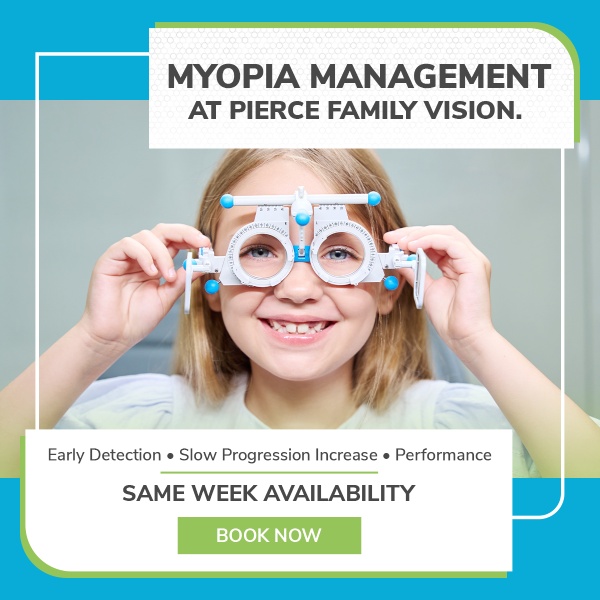The definition of Presbyopia:
“Presby” Latin for old and “opia” Greek for visual disorder
Yup, old eyes. Welcome to the club if your near vision is not what it used to be. I am often explaining to my patients that our eyes are very sophisticated cameras. If you watch a 35mm camera in action, you can see the lens moving in and out to change focus from distance to near. However, the lens inside the eye (located directly behind the iris, or coloured part of the eye) changes shape to change focus from distance to near. Great design, but the problem is that the lens in the eye adds a layer every so often, gradually getting larger and stiffer with age. The muscle pushing on it is fine, but it is like pushing on a rock after a while, and this is when the near vision becomes blurry. At first it is just difficult with fine print in dim light, but the near vision gradually worsens, and no diet or exercise has yet been found to slow this down.
If it makes you feel better, it doesn’t start at 40, but is a downhill slide from the age of 12 or so. Children have thin flexible lenses and so can read right in front of their noses, which drives parents crazy! (Parental instincts are correct – to prevent myopia, holding reading and screens no closer than elbow distance is best) From the ages of 12 to 40 something, the near focal point moves out to beyond a normal reading distance and that’s when we have to use either reading/computer glasses or progressive lenses which blend the distance prescription in the top of the lens gradually into the reading prescription at the bottom of the lens. And no lines!
So how about those over the counter “readers” or “cheaters” that you see on sale everywhere? Well if they prevent you from coming in at least every 2 years for an eye exam to make sure your eyes are healthy, then they are bad. Otherwise, they won’t hurt your eyes or vision but they will never be as clear and comfortable as properly optically ground prescription glasses, made exactly for your eyes. My advice is often to get one proper prescription pair of glasses for extended near work, and then you can sprinkle the “cheaters” around for occasional use. And unless you have perfect distance vision, “cheaters” may not work for you at all, but your optometrist will be able to answer all your questions about glasses options at your exam.
Now the progressives or “no lines” do require some explanation here. Most of us over a certain age who are wearing glasses all the time are wearing progressives which have the distance in the top and the reading in the bottom of the lens. They do take a little getting used to, but not too much, otherwise there wouldn’t be so many of us happily wearing them. Yes we all just really want our old eyes back (or should I say our young eyes back) but for most of us progressives are the best compromise for general wear. When you put on your first pair of progressives, the eyes usually love them immediately. Gaze in the distance and it will be clear through the top of the lens, and looking down at your cell phone or book it will be clear through the bottom of the lens. The brain takes a little longer to adapt to progressives as at first it will send messages that something looks odd when moving the eyes or head. There may be some swim or distortion noticed in the periphery when adapting to progressives. This is normal and the cure is WALKING. The more walking you do in your new progressives, the faster the brain will adapt and stop sending you those messages that something is weird with your new glasses. Within 2 days to 2 weeks, your new glasses should feel good and be working well. And if they aren’t, we want to know about it so we can fix whatever the issue is and get you happy.
I do get asked regularly whether wearing reading glasses makes eyes weaker or dependent on glasses and the answer is no. Presbyopia is a physical change in the lens that won’t worsen with wearing glasses. I also get asked the opposite, whether NOT wearing reading glasses and straining to see fine print will harm the eyes. The answer is no again. It may give you eye strain or a headache but won’t harm your eyes.
Every pair of eyes are individual and the best solution to the presbyopia issue will vary depending on prescription, visual demands and even personality! But your optometrist at Pierce Family Vision will help you find the best solution for you.



